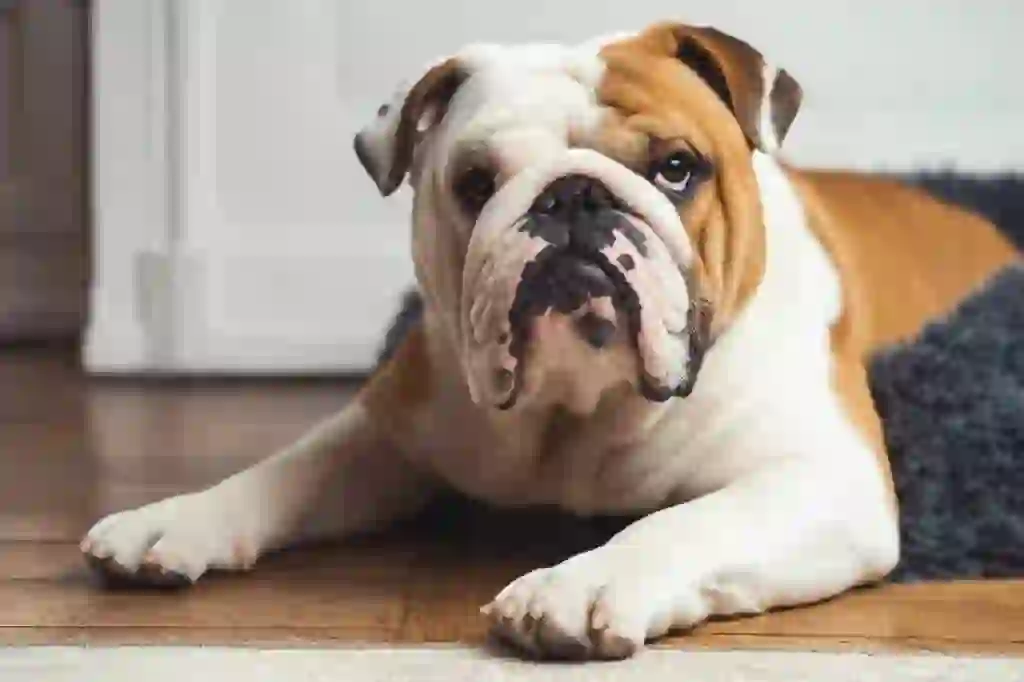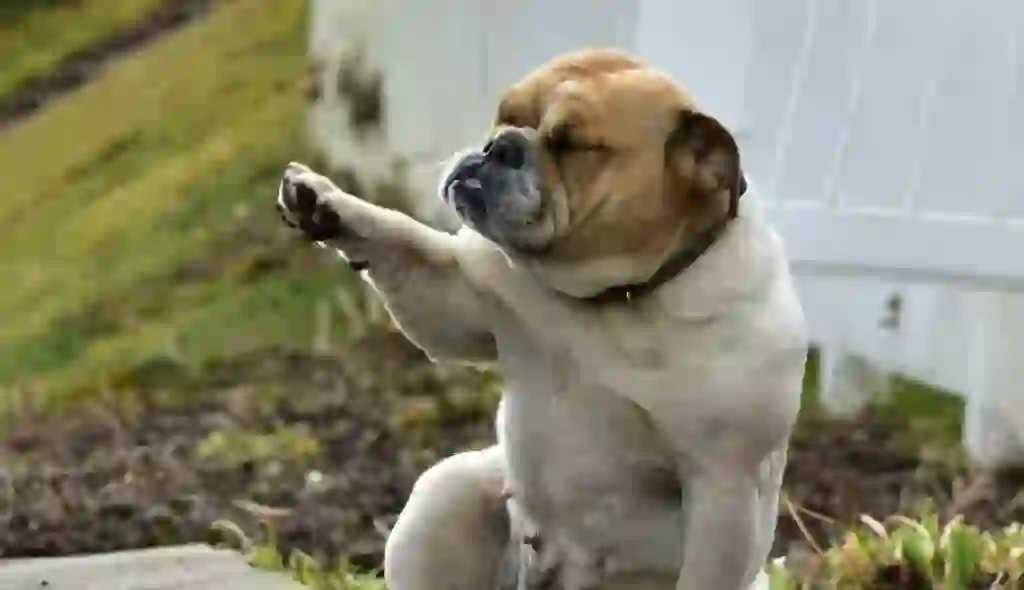
Bulldog
Bulldog
Bulldog
What comes to mind when you hear 'Bulldog'? A fierce-looking dog with a spiked collar, or perhaps a dog walking with a chimpanzee on TV? Maybe even a brand of sauce? The Bulldog's unforgettable, menacing appearance may evoke such images. However, the Bulldog has a surprisingly gentle nature and some breed-specific challenges. Shall we explore these secrets together?
Bulldog Basic Infomation

Country of origin: United Kingdom
Height: 36–38 cm
Male weight: 23 kg, Female weight: 18 kg
Today, Bulldogs are beloved for their charming appearance as pets, but originally, their ancestors were fighting dogs bred to battle bulls. In England, the gruesome sport known as 'bull-baiting' began around the 13th century and became a common entertainment among nobles and commoners by the 19th century.
However, as the cruelty of this sport was increasingly recognized, bull-baiting was prohibited by law in 1853.
As Bulldogs were primarily bred for fighting, they were considered worthless when bull-baiting was banned, bringing them to the brink of extinction.
Nevertheless, through the efforts of some enthusiasts and breeders, Bulldogs were crossbred to become suitable as pets. As a result, they lost the fierce temperament and strong aggression typical of fighting dogs and transformed into the gentle and calm dogs known today. Despite their fierce appearance, Bulldogs have gained worldwide popularity due to their gentle nature.
Bulldog Q&A

What is the origin of the name 'Bulldog'?
The 'bull' in Bulldog refers to the bull, and 'baiting' refers to biting. Bulldogs were originally developed as fighting dogs for attacking bulls, which is how they got their name.

What are the color variations of the Bulldog?
Colors include white, red, fawn (a golden shade of brown), fallow (a pale yellow), brindle (a marbled pattern resembling frost), and pied (a white base with one or two colors of patches).

What group does the Bulldog belong to?
According to the classification rules of the Japan Kennel Club (JKC) and the Fédération Cynologique Internationale (FCI), Bulldogs belong to Group 2.
This group includes dogs that serve as guard dogs, police dogs, or work closely with humans in various capacities.
Typically, breeds in Group 2 are large, strong, and robust, often tasked with guarding duties.
They generally have a strong protective instinct and can exhibit a strong personality, but they also show deep affection and loyalty to their family and owners. Therefore, it is important for the owner to establish themselves as the leader; a strong bond of trust can make these dogs reliable and valuable partners.

What does the Bulldog look like?
The Bulldog's most distinctive features are its flat nose and folded ears, its face and body skin are loose and wrinkled, giving it a charming appearance. Although its body shows some skin looseness, it's not as much as on the face.
With its round and chunky body shape, and because of this looseness, it might look 'chubby' at first glance, but it's surprisingly muscular and solid when touched. However, Bulldogs have short legs, so obesity can strain their hips and legs. It might be hard to notice due to the loose skin, but it's crucial to manage their weight carefully.

Why does the Bulldog's face droop?
As mentioned in the basic information, Bulldogs were originally bred as fighting dogs. Breeding modifications were often made to fighting dogs to give them an advantage in battles. Bulldogs are no exception.
When biting a bull, dogs with long snouts like Borzois, called dolichocephalic breeds, would have their noses crushed making it hard to breathe and hold on. In contrast, brachycephalic breeds with short snouts, like Bulldogs, do not have their noses crushed, allowing them to bite for longer periods.
Thus, Bulldogs were bred to be able to latch onto a bull for extended periods, which led to the shortening of the nose and the increase of facial skin looseness.

Why is the sauce named 'Bulldog'?
When you hear 'Bulldog', some might think of Bulldog sauce. The reason the Bulldog was chosen for the sauce label in its country of origin, England, where the Bulldog was a popular household dog, was because the food wholesaler Sanzawaya, later Bulldog Sauce Co., wanted the sauce to be loved and familiar to many people, just like the Bulldog.

Is it true that Bulldogs have difficulty with natural birth?
Yes, it is true. When Bulldog mothers give birth, they often do so via cesarean section because over 90% of births are performed this way, requiring the cooperation of veterinarians and specialists. The reasons Bulldogs have difficulty with natural births are primarily due to their small pelvis and the narrow birth canal, making it very hard for the puppies to come out, and the puppies' heads are often too big for the birth canal, putting too much strain on the mother.
While it is extremely rare, some Bulldogs can give birth naturally. However, this can be very painful and taxing for the mother, potentially endangering both the mother and the puppies.

How much does it cost to buy a Bulldog?
A Bulldog can cost between 200,000 to 300,000 yen in pet shops, and buying from a breeder can cost around 500,000 yen. In some cases, Bulldogs can be priced between 1,000,000 to 2,000,000 yen. If considering a purchase, it is advisable to visit and see the puppy first.
Furthermore, about 5% of breeders in Japan are considered 'Serious Breeders', who have higher qualifications and charge more than general breeders.

What are the character and features of the Bulldog?
Despite their somewhat intimidating face, Bulldogs have a gentle temperament. They are kind to children and show a cuddly side to their owners. With their rich facial expressions, Bulldogs are considered emotionally expressive dogs.
While Bulldogs are loyal and affectionate towards their owners, they can sometimes be stubborn. They may refuse to eat food they don't like or become too tired to continue walking during walks. In such cases, while it might be necessary to indulge their preferences occasionally, consistent discipline during training is crucial to prevent future behavioral issues.
Training should start early in the puppy stage during the 'socialization period', which lasts from about three weeks to twelve weeks of age. This early training is essential for a harmonious future with your pet.

Would you like to become a part of the 'Animalbook.jp'?
Turn your knowledge into Q&A and share it with the world. ※Publication will be activated after purchase. Let's share information together!
Bulldog Type of List

- Bulldog
Information
Congratulations! You are the first commenter!

Create Your Favorite List!
Bulldog
Save the animals you love! Build your own list to quickly revisit your favorites later.

Would you like to leave a comment?
※Please note: This is for the purchase of rights to post comments within the article.
Find Your Favorites!
Our shop offers a unique and attractive selection of goods themed around various animals.
Bulldog References

- よくわかる犬種図鑑ベスト185 動物ジャーナリスト藤原直太朗
- まるごとわかる犬種大図鑑 監修 若山動物院院長 若山正之
- AMERICAN KENNEL CLUB https://www.akc.org/dog-breeds/bulldog/
- THE KENNEL CLUB https://www.thekennelclub.org.uk/search/breeds-a-to-z/breeds/utility/bulldog/
- JAPAN KENNEL CLUB https://www.jkc.or.jp/archives/world_dogs/2711
- 犬との暮らし大百科 https://www.anicom-sompo.co.jp/inu/
- みんなの犬図鑑 https://www.min-inuzukan.com/
- Pet Smile news forワンちゃん https://psnews.jp/dog/
- 子犬のへや https://www.koinuno-heya.com/
- わんちゃんホンポ https://wanchan.jp/
Bulldog Introduction of media used

出典:https://www.pexels.com/ja-jp/ja-jp/photo/3978352/

出典:https://www.pexels.com/ja-jp/photo/5029543/

出典:https://pixabay.com/images/id-2437111/

出典:https://pixabay.com/images/id-2403747/

出典:https://unsplash.com/photos/qJQRJAnFuTI

出典:https://unsplash.com/photos/ghzd07lZOIc

出典:https://unsplash.com/photos/TivcHM0QYNg

出典:https://unsplash.com/photos/L3QaPU8ByLY

出典:https://unsplash.com/photos/YppzFDYcJgk

出典:https://pixabay.com/images/id-4215226/

出典:https://www.pexels.com/ja-jp/photo/9547443/

出典:https://unsplash.com/photos/coVY3nFfSrw

出典:https://unsplash.com/photos/MLiYvfvAXOU

出典:https://pixabay.com/images/id-6258588/

Help Enrich Our Animalbook.jp with Your Media!
We are constantly looking to expand and enrich our Animalbook.jp with amazing photos and videos of animals. If you have any media that you'd like to share, please contribute and help us showcase the beauty and diversity of the animal kingdom. Your submissions will be credited and featured in our encyclopedia, reaching a wide audience of animal lovers.


















